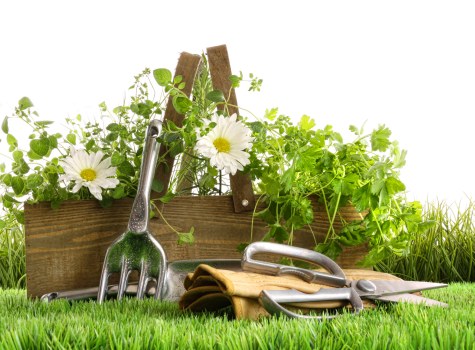Tree Lopping and Removal in Hedge Trimmer
Understanding Tree Lopping and Removal

Tree lopping and removal are essential practices in maintaining the health and aesthetics of your garden or property. Whether you're dealing with overgrown hedges or hazardous trees, understanding the right techniques and tools is crucial. In this article, we'll delve into the intricacies of tree lopping and removal, specifically focusing on the role of hedge trimmers in these processes.
Proper tree maintenance not only enhances the visual appeal of your landscape but also ensures the safety of your surroundings. Neglected trees can become weak or diseased, posing risks of falling branches or even whole trees in extreme cases. Therefore, regular attention to tree health and structure is imperative.
Hedge trimmers play a pivotal role in the process of tree lopping and removal. These tools are designed to make precise cuts, allowing for controlled shaping and trimming of hedges and trees. Whether you're a professional landscaper or a DIY enthusiast, mastering the use of hedge trimmers can significantly improve your tree maintenance efforts.
The Importance of Tree Lopping

Tree lopping involves the selective cutting of specific branches to reduce the overall size or to remove damaged or dead parts of a tree. This process is vital for several reasons:
- Health: Removing diseased or dead branches helps prevent the spread of infections and promotes healthier growth.
- Safety: Eliminating weak branches reduces the risk of them falling and causing injury or property damage.
- Aesthetics: Well-maintained trees enhance the visual appeal of your garden, providing structure and beauty.
- Space Management: Controlling the size and shape of trees ensures they don't encroach on buildings or other plants.
Effective tree lopping requires knowledge of the tree's biology and the appropriate techniques to avoid causing unnecessary stress or damage. Using the right tools, such as hedge trimmers, can make this task more manageable and precise.
Moreover, regular lopping can extend the lifespan of your trees by preventing issues that could lead to their decline. It's an investment in the long-term health and sustainability of your green spaces.
Tree Removal: When It’s Necessary

While tree lopping is about maintenance, tree removal is the process of entirely eliminating a tree from its location. This action is typically necessary under certain conditions:
- Disease or Decay: Trees that are severely diseased or rotten pose significant risks and often need to be removed.
- Structural Damage: Trees damaged by storms or other events may be unstable and require removal to prevent hazards.
- Overgrowth: Trees that have grown beyond their intended space can interfere with structures, utilities, or other plants.
- Safety Concerns: Trees located near power lines or buildings may need to be removed to mitigate safety risks.
Tree removal is a complex and potentially dangerous task that should be approached with caution. It often requires professional expertise to ensure the process is carried out safely and efficiently. Hedge trimmers can aid in the removal process by facilitating precise cuts, but larger sections may necessitate additional equipment.
Additionally, environmental considerations should be taken into account before removing a tree. Trees play a crucial role in ecosystems, providing oxygen, supporting wildlife, and contributing to the overall health of the environment. Therefore, removal should be a well-considered decision.
Using Hedge Trimmers for Tree Lopping

Hedge trimmers are versatile tools that can be effectively used for tree lopping. Their design allows for clean and precise cuts, which are essential for the health of the tree. Here are some key aspects to consider:
- Choosing the Right Trimmer: Select a hedge trimmer that suits the size and type of trees you’re working with. Electric or gas-powered trimmers offer different levels of power and flexibility.
- Proper Technique: Use smooth, steady movements to make clean cuts. Avoid sawing motions, as they can crush the wood and damage the tree.
- Safety Precautions: Always wear protective gear, including gloves, safety glasses, and sturdy footwear. Be mindful of your surroundings to prevent accidents.
- Maintenance: Regularly sharpen the blades of your hedge trimmer to ensure efficient cutting. Clean the tool after each use to prolong its lifespan.
Employing the correct techniques not only makes the task easier but also promotes the health of the tree by minimizing stress and potential infection points.
Furthermore, hedge trimmers come in various designs, such as single-action and double-action models, each suitable for different tasks and preferences. Understanding the differences can help you choose the best trimmer for your needs.
Steps for Effective Tree Removal

Removing a tree involves several steps to ensure the process is safe and effective:
- Assessment: Evaluate the tree’s condition, surrounding environment, and the reason for removal. This helps in planning the process accurately.
- Planning: Develop a removal plan, considering the tree’s size, the proximity to structures, and the potential risks involved.
- Preparation: Gather all necessary tools and safety equipment. Ensure you have hedge trimmers, chainsaws, ropes, and protective gear at hand.
- Cutting: Start by removing lower branches using hedge trimmers. Gradually work your way up, making precise cuts to control the tree’s fall direction.
- Felling: Carefully bring down the tree, ensuring that the area is clear of obstacles and bystanders.
- Cleanup: Remove the fallen tree and clear the area of debris. Proper disposal of the wood and branches is essential for environmental considerations.
Each step requires careful attention to detail and adherence to safety protocols. Improper removal can lead to accidents, property damage, and environmental harm.
For large or particularly hazardous trees, it’s advisable to seek professional assistance. Experts have the experience and equipment necessary to handle complex removal tasks safely.
Benefits of Professional Tree Services

While DIY tree lopping and removal can be feasible for small tasks, professional tree services offer numerous advantages:
- Expertise: Professionals possess the knowledge and skills to assess tree health accurately and determine the best course of action.
- Safety: Trained arborists understand the risks involved and employ safety measures to protect both themselves and your property.
- Equipment: Professionals use specialized tools and equipment that may not be readily available to homeowners, ensuring efficient and effective work.
- Time-Saving: Outsourcing tree services allows you to focus on other tasks, saving you valuable time and effort.
- Environmental Responsibility: Professional services often include proper disposal and recycling of tree materials, promoting environmental sustainability.
Investing in professional tree services can result in better outcomes, whether it's maintaining healthy trees or safely removing unwanted ones.
Additionally, many professional services offer guarantees and insurance, providing peace of mind in case of any unforeseen issues during the tree maintenance process.
Choosing the Right Hedge Trimmer

Selecting the appropriate hedge trimmer is essential for effective tree lopping and maintenance. Here are some factors to consider:
- Type of Trimmer: Decide between manual, electric, or gas-powered hedge trimmers based on the size of the job and your physical capacity.
- Blade Quality: High-quality blades ensure clean cuts and reduce the risk of damaging the tree. Look for durable materials like stainless steel.
- Length of Blades: Longer blades can cover more area quickly, ideal for larger hedges, while shorter blades offer more control for detailed work.
- Weight and Ergonomics: A lightweight and well-balanced trimmer reduces fatigue and enhances maneuverability.
- Safety Features: Features like blade guards, safety switches, and ergonomic grips contribute to safer operation.
Investing in a high-quality hedge trimmer tailored to your specific needs can make your tree maintenance tasks more efficient and less strenuous.
Additionally, considering the trimmer’s maintenance requirements and availability of replacement parts can ensure long-term usability and performance.
Safety Tips for Tree Lopping and Removal

Tree lopping and removal involve inherent risks, making safety a top priority. Follow these essential safety tips to minimize hazards:
- Wear Protective Gear: Always use gloves, safety glasses, helmets, and sturdy footwear to protect yourself from debris and accidental cuts.
- Inspect Tools: Before starting, check your hedge trimmers and other tools for any damage or maintenance needs.
- Plan Your Cuts: Visualize the tree’s structure and plan each cut to control the direction in which branches fall.
- Clear the Area: Ensure the surrounding area is free from obstacles and bystanders. Remove any objects that could interfere with the work.
- Use Proper Techniques: Avoid overreaching and maintain a stable stance while working. Use the trimmers as intended to prevent accidents.
- Stay Alert: Be aware of your surroundings, especially when working near power lines or structures that could be affected by falling branches.
By adhering to these safety measures, you can significantly reduce the risk of injuries and ensure a smoother tree maintenance process.
Moreover, consider taking a safety course or seeking guidance from professionals if you’re unfamiliar with tree lopping and removal procedures.
Environmental Considerations

Tree maintenance practices have a direct impact on the environment. Here are some key considerations to ensure your efforts are environmentally friendly:
- Sustainable Practices: Avoid overpruning or removing too many branches, which can stress the tree and affect its health.
- Proper Disposal: Recycle or compost tree waste to minimize environmental impact. Many communities offer green waste disposal services.
- Preserve Biodiversity: Maintain a variety of tree species to support local ecosystems and wildlife.
- Use Eco-Friendly Tools: Opt for electric or battery-powered hedge trimmers to reduce carbon emissions compared to gas-powered models.
- Water Conservation: Ensure trees are adequately watered, especially during dry periods, to support their growth and resilience.
Implementing these practices promotes a healthy environment and ensures that your tree maintenance efforts contribute positively to the ecosystem.
Additionally, planting native tree species can enhance environmental sustainability and provide better support for local wildlife.
Cost-Effective Tree Maintenance

Maintaining your trees through lopping and removal doesn’t have to break the bank. Here are ways to keep costs manageable:
- Regular Maintenance: Frequent, smaller maintenance sessions are more cost-effective than large, infrequent projects. They prevent the need for extensive work later on.
- DIY vs. Professional Services: For minor tasks, do-it-yourself approaches using hedge trimmers can save money. However, for complex removals, professional services might be more economical in the long run.
- Invest in Quality Tools: Purchasing durable, high-quality hedge trimmers reduces the need for frequent replacements and repairs.
- Plan Ahead: Seasonal maintenance can take advantage of slower periods when services might be more affordable.
- Bundle Services: Combining multiple tree maintenance tasks can lead to discounts from professional service providers.
By adopting these strategies, you can maintain healthy and beautiful trees without overspending.
Additionally, preventive care can help you avoid costly repairs or replacements caused by neglected tree issues.
Choosing Professional Tree Loppers and Removers

Selecting the right professionals for your tree maintenance needs is crucial. Consider the following when making your choice:
- Experience and Expertise: Look for companies with a proven track record and knowledgeable staff.
- Licensing and Insurance: Ensure the service provider is properly licensed and insured to protect against potential liabilities.
- Reputation: Research reviews and testimonials to gauge customer satisfaction and reliability.
- Range of Services: Choose a provider that offers comprehensive tree lopping and removal services to meet all your needs.
- Pricing: Obtain detailed quotes and compare prices to find a service that fits your budget without compromising quality.
Taking these factors into account will help you find trustworthy professionals who can effectively manage your tree maintenance tasks.
Additionally, inquire about the company’s approach to environmental sustainability and their methods for waste disposal.
Enhancing Your Garden with Proper Tree Maintenance

Proper tree lopping and removal contribute significantly to the overall health and beauty of your garden. Here’s how:
- Improved Airflow: Thinning out branches increases air circulation, reducing the risk of disease and promoting healthy growth.
- Sunlight Exposure: Properly trimmed trees allow more sunlight to reach other plants, enhancing their growth and vibrancy.
- Structural Integrity: Maintaining the correct structure of trees prevents structural weaknesses that could lead to breakage.
- Enhanced Curb Appeal: Well-maintained trees add to the visual appeal of your property, increasing its value and attractiveness.
- Wildlife Support: Healthy trees provide habitats for various wildlife, contributing to a balanced ecosystem.
By prioritizing tree maintenance, you create a harmonious and flourishing garden environment.
Additionally, consider integrating companion planting and other landscaping techniques to further enhance the ecological balance of your garden.
Advanced Techniques in Tree Lopping

For those looking to take tree lopping to the next level, advanced techniques can yield superior results:
- Branch Notching: Creating a notch in the branch before making a full cut prevents tearing and ensures a clean removal.
- Directional Pruning: Cutting branches in a way that directs the growth pattern can shape the tree more effectively.
- Incremental Trimming: Gradually trimming the tree over several sessions reduces stress and allows the tree to adjust.
- Use of Support Systems: Installing supports can help newly pruned branches recover more quickly and maintain structural integrity.
- Integration with Other Tools: Combining hedge trimmers with other tools like loppers or saws can enhance precision and efficiency.
Mastering these techniques requires practice and a deep understanding of tree biology. However, the results can lead to healthier and more aesthetically pleasing trees.
Consider seeking training or workshops to improve your tree lopping skills and stay updated with the latest industry practices.
Tools and Equipment for Tree Removal

Effective tree removal relies on the right set of tools and equipment. Here are some essentials:
- Hedge Trimmers: For initial pruning and shaping before removal.
- Chainsaws: Essential for cutting through larger branches and trunk sections.
- Ropes and Harnesses: For safely controlling the direction of falling trees or branches.
- Stakes and Wedges: Used to support sections of the tree and guide the fall.
- Loppers: Handy for cutting smaller branches that are out of reach for hedge trimmers.
Investing in high-quality tools not only improves efficiency but also ensures safety during the tree removal process.
Regular maintenance of your tools, including cleaning and sharpening blades, is essential for optimal performance and longevity.
Environmental Impact of Tree Removal

Tree removal has significant environmental implications that should be carefully considered:
- Loss of Habitat: Trees provide shelter and food for various wildlife species. Removing them can disrupt local ecosystems.
- Carbon Footprint: Trees act as carbon sinks, absorbing CO2. Their removal reduces this carbon sequestration capacity.
- Soil Erosion: Roots help stabilize the soil. Removing trees can increase the risk of erosion, especially on slopes.
- Microclimate Changes: Trees influence local temperature and humidity. Their absence can lead to hotter and drier conditions.
- Water Cycle Disruption: Trees play a role in the water cycle by absorbing and releasing water. Removing them can affect local water regulation.
To mitigate these impacts, consider alternatives to removal, such as transplanting or selective pruning, wherever possible.
Additionally, planting new trees can help compensate for those that have been removed, maintaining ecological balance.
Maintenance Tips for Longevity

Ensuring the longevity and health of your trees requires consistent maintenance practices:
- Regular Inspections: Periodically check your trees for signs of disease, damage, or pest infestations.
- Appropriate Watering: Provide adequate water, especially during dry spells, to support healthy growth.
- Fertilization: Use suitable fertilizers to provide essential nutrients that may be lacking in the soil.
- Mulching: Apply mulch around the base of trees to retain moisture, regulate soil temperature, and suppress weeds.
- Proper Pruning: Regular pruning with hedge trimmers ensures trees maintain their shape and structural integrity.
Implementing these tips can significantly enhance the resilience and beauty of your trees, ensuring they thrive for years to come.
Additionally, avoiding common mistakes like over-pruning or improper cutting can prevent long-term damage to your trees.
Conclusion

Tree lopping and removal are critical aspects of tree care that contribute to the health, safety, and beauty of your environment. Utilizing hedge trimmers effectively can make these tasks more manageable and precise.
Whether you're maintaining a single hedge or managing a landscape with multiple trees, understanding the right techniques, tools, and safety measures is essential. Regular maintenance not only enhances the aesthetics of your property but also ensures the longevity and well-being of your trees.
For complex tasks or large-scale removal, seeking professional assistance is advisable to ensure the job is done safely and efficiently. Professionals bring expertise, specialized equipment, and a commitment to environmental responsibility, making them valuable partners in your tree maintenance endeavors.
Investing time and resources into proper tree care practices will yield lasting benefits, creating a vibrant and sustainable environment for years to come.
Contact us today to learn more about our tree lopping and removal services and ensure your trees receive the best care possible.